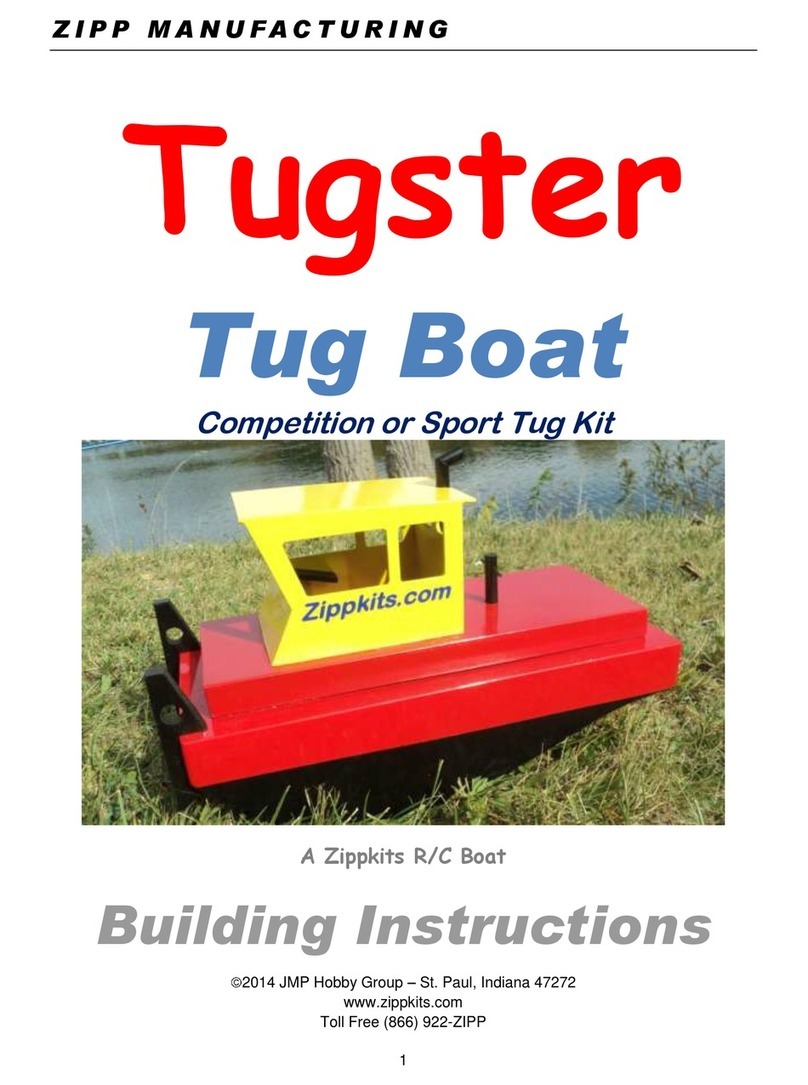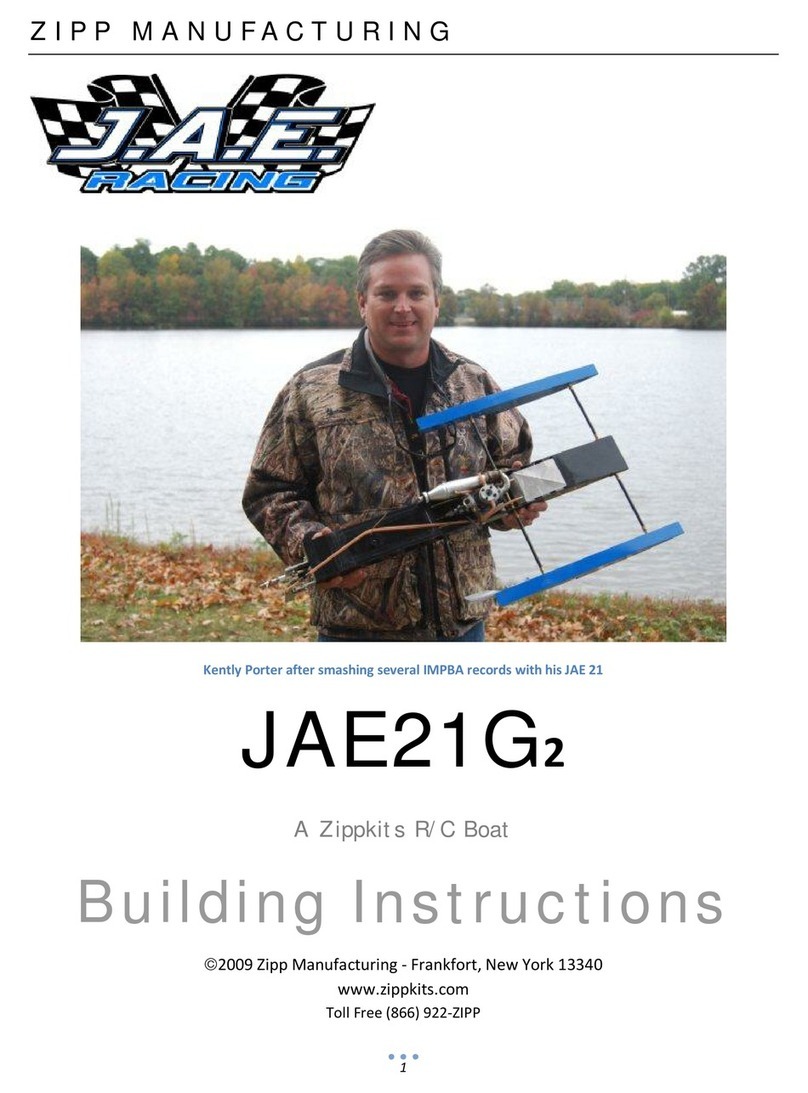Let’s get started.
Attach the jig board to your FLAT bench (or 12x48
ply) with screws, nails, clamps or whatever you
need, to make sure it’s attached to the surface.
Make sure the “F” is so that you can read it.
Remove bulkheads 1, 2, and 3 from the sheet.
Sand the edges with 80 grit to remove the fuzz, as
well as the little tabs that held them in the sheet.
Put bulkheads 1, 2 and 3 into the jig, engaging the
tabs in the slots.
Starting from the front of the jig, glue the tabs of
bulkhead 1 to the jig.
Use a square to ensure that it’s 90 degrees to the
jig. Also make sure that the tabs don’t protrude
under the jig.
Use CA and accelerator.
When dry and square, glue bulkheads 2 and 3 the
same way. Use the square.
Remove both keels.
Sand as before.
Using CA, glue both keels together. Be sure that
the keels are aligned with each other.
Clamp while drying.
Remove, sand and glue bulkheads 4 and 5 to the
jig as before.
Find the two ¼ ply engine rails. Sand them smooth
with 80.
Now look at bulkhead 5. Is it twisted or warped? If
so, clamp a piece of wood to the back of it for the
next few steps.
Remove the two keel supports from the sheet.
Sand the edges with 80, and glue them to the jig
board at the front. There should be about a ¼ inch
gap between the braces.
The keel should be dry by now.
Check the fit of the keel into bulkheads 1, 2 and 3.
If ok, glue it in, making sure the keel is centered on
bulkhead 1.
This kind of looks like a boat, doesn’t it?
Take a break, and give the glue a little while to
completely cure.






























